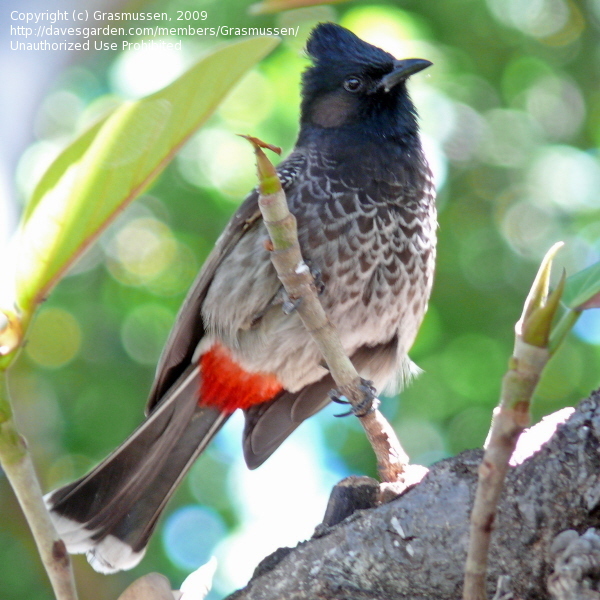
Pycnonotus cafer
TAXONOMY
Pycnonotus cafer Linnaeus, 1766. Nine subspecies recognized,
extensive hybridization between races. Forms superspecies with
six other bulbuls: common P. barbatus, black-fronted P. nigricans,
Cape P. capensis, white-speckled P. xanthopygos, whiteeared
P. leucotis, and Himalayan and sooty-headed P. aurigaster.
OTHER COMMON NAMES
French: Bulbul а ventre rouge; German: Russbьlbьl; Spanish:
Bulbul Ventrirrojo.
PHYSICAL CHARACTERISTICS
7.8–9 in (20–23 cm), 1.0–2.0 oz (31–59 g). Glossy black chin
and throat, slightly tufted head. Back and breast feathers
brownish black edged with gray, appearing scalelike. Rump
white, tail brownish black with white tip, undertail (“vent”)
crimson. Sexes alike. Juvenile resembles adult, but paler; undertail
pinkish.
DISTRIBUTION
Native range covers the Indian subcontinent to southwestern
China and Polynesia. Established populations in O’ahu,
Hawaii.
HABITAT
Deciduous forest, gardens, and light scrub.
BEHAVIOR
Keeps in pairs or loose flocks. Bold and tame, can be quarrelsome.
Aggressive
BEHAVIOR
includes “crest-raising,” whereby
crest feathers arch over bill and body feathers fluff out. Call a
“be-care-ful” or “be-quick-quick,” alarm a sharp “peep.” Nonmigratory.
FEEDING ECOLOGY AND DIET
Mainly eats fruits and berries, including figs (Ficus spp.), nightshade
(Solanum spp.), and Lantana. Also eats insects, often
caught on the wing.
REPRODUCTIVE BIOLOGY
Appears to be monogamous. Male courtship display involves
showing erect crimson undertail. Two broods per season, male
and female build nest, and both may incubate eggs 10–14 days.
Fledge 12 days.
CONSERVATION STATUS
Not threatened. Widespread and common throughout range,
well adapted to human environments. In Pakistan, building of
canals and plantations has increased range.
SIGNIFICANCE TO HUMANS
Fruit-eating a threat to nurseries and agricultural orchards;
management taken in Hawaii to prevent spread. Also disperses
noxious weed seeds.
Photo Gallery of - Red-vented bulbul
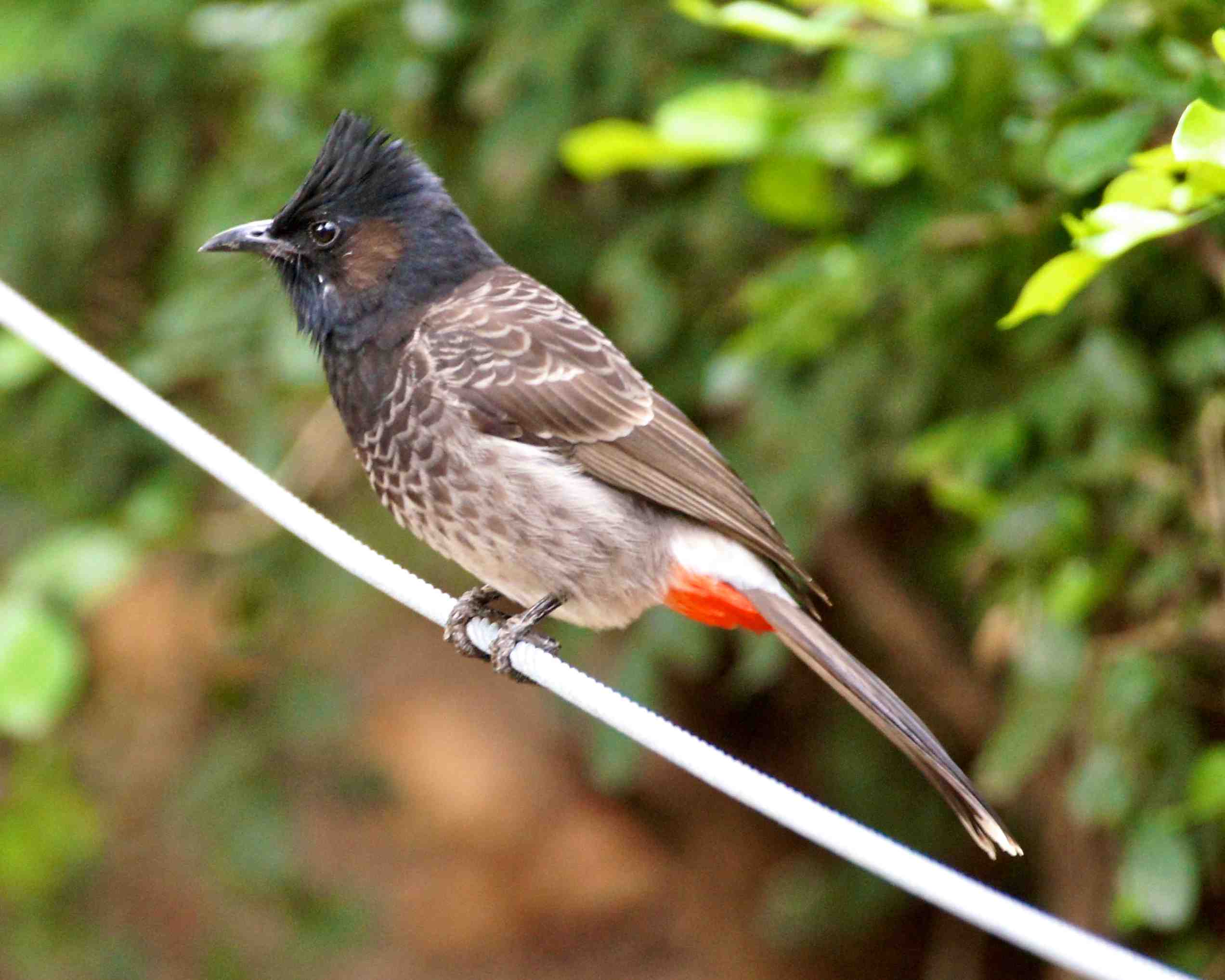
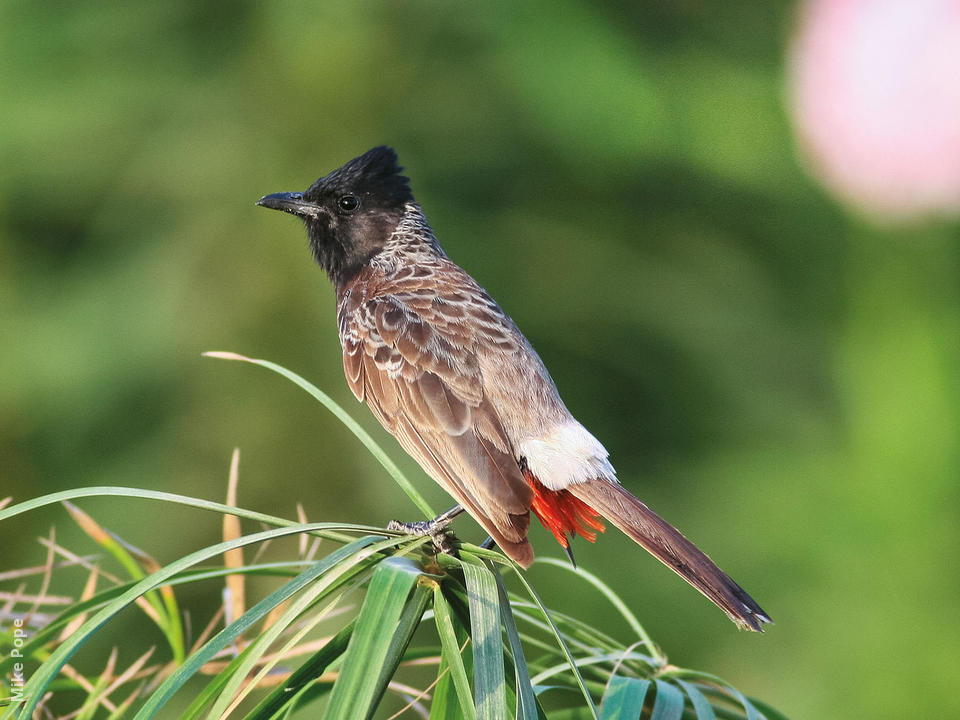
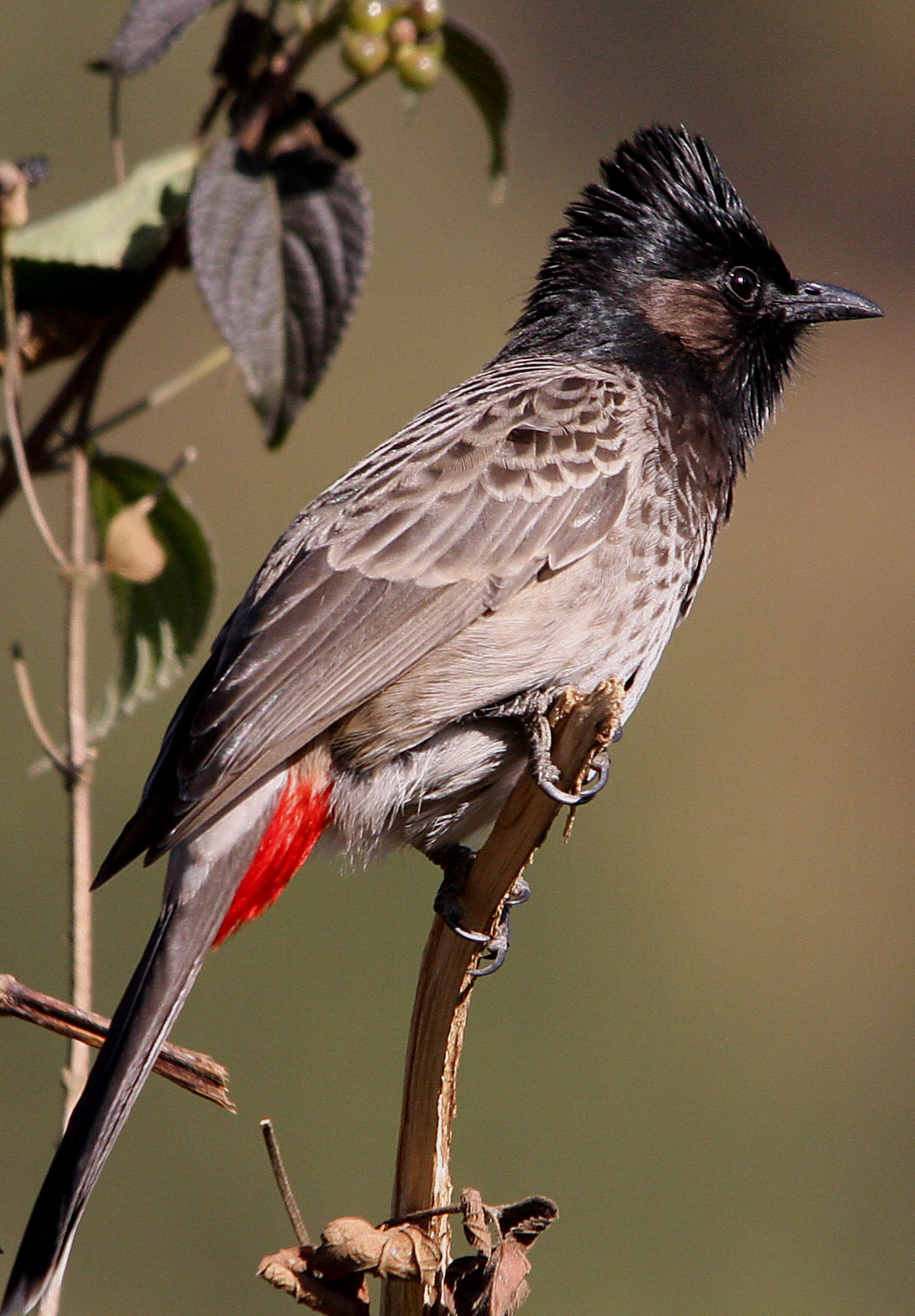
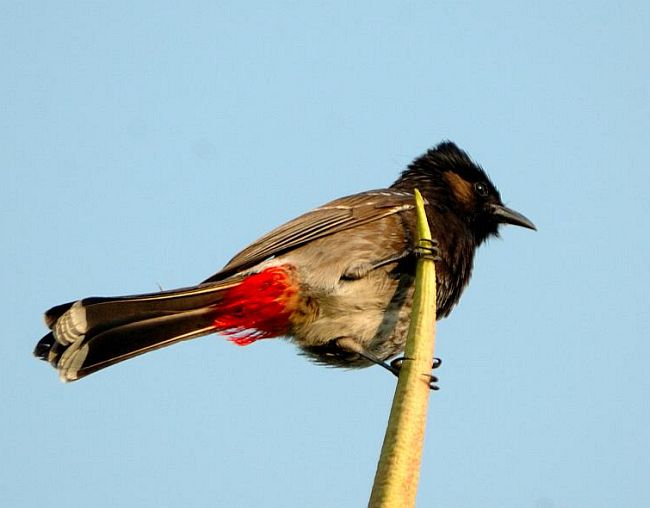
 Animalia Life
Animalia Life